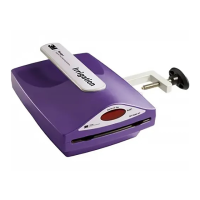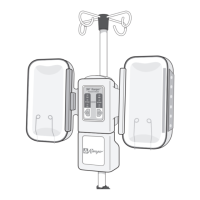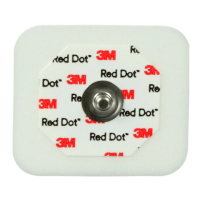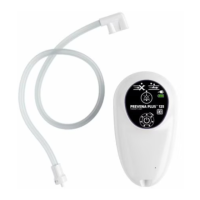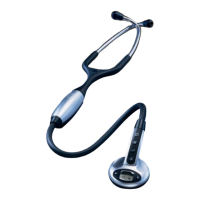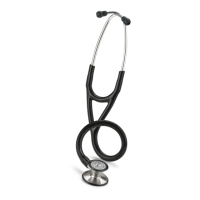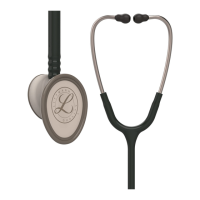Ranger Blood and Fluid Warming Systems
English
12
Arizant Healthcare Inc.
testing the oveR-temPeRatuRe alaRm Points (43°C [±1] and 46°C [+3, -2])
e over-temperature alarm test causes the Ranger unit to go into an over-temperature test mode by
manually overriding the primary control system and engaging the heaters� e Ranger system is very
responsive to heater input; therefore the test procedures are technique sensitive� Read instructions
thoroughly before beginning these tests�
e rst alarm point at 43°C (±1) alerts user to the rise in temperature (see step 7)� At the
46°C (+3, -2) secondary alarm set point, the unit cuts power to the heaters (see step 8)� Please note that
due to the heaters’ rapid response, you may see temperature readings dri within the range of
44-49°C�
7� Loosen the over-temperature screw on the
bottom of the Ranger unit (see Fig� 3)� Listen
for a slight click as the microswitch opens�
Loosen ½ turn more. is unit is now
in over-temperature test mode, and the
temperature output of the unit should begin
to rise� When the Ranger display reads 43°C,
verify that an audible alarm sounds, the alarm
light illuminates, and the display alternately
ashes “HI” and the plate temperature�
8� Listen for the power relay to click at
46°C (+3, -2) (you can feel the click when holding the lower le corner of the unit as you face
the front display)� e click signies the secondary alarm trip point and signals that power to
the heaters has been shut o� e over-temperature alarm sounds, the alarm light illuminates,
and the alphanumeric display alternately reads “HI” and the plate temperature� Watch the
thermocouple temperature monitor to determine the unit’s peak temperature output (less than
1 minute)� e temperature reading on the monitor should peak at 46°C (+3, -2)�
note: If the temperature displayed on the thermocouple monitor exceeds 49°C during the test, tighten
the over-temperature test screw on the bottom of the Ranger unit, unplug it, and run cold uids
through the warming cassette� is returns the unit to normal operating temperature� Call
Arizant Healthcare Inc� Technical Support�
9� e secondary alarm is designed to latch� Verify this feature by momentarily turning o the
power switch, then turning it on again� e Ranger unit should continue alarming throughout
this sequence�
10� Securely tighten the over-temperature screw, turn o the Ranger unit, and unplug the unit�
Once power is cut to the Ranger unit, the alarm will cease� e unit is ready to return to service
aer it cools to normal operating temperature (approximately 20-30 minutes)�
Fig. 3: Ranger over-temperature screw
Over-temperature
screw
Model 245

